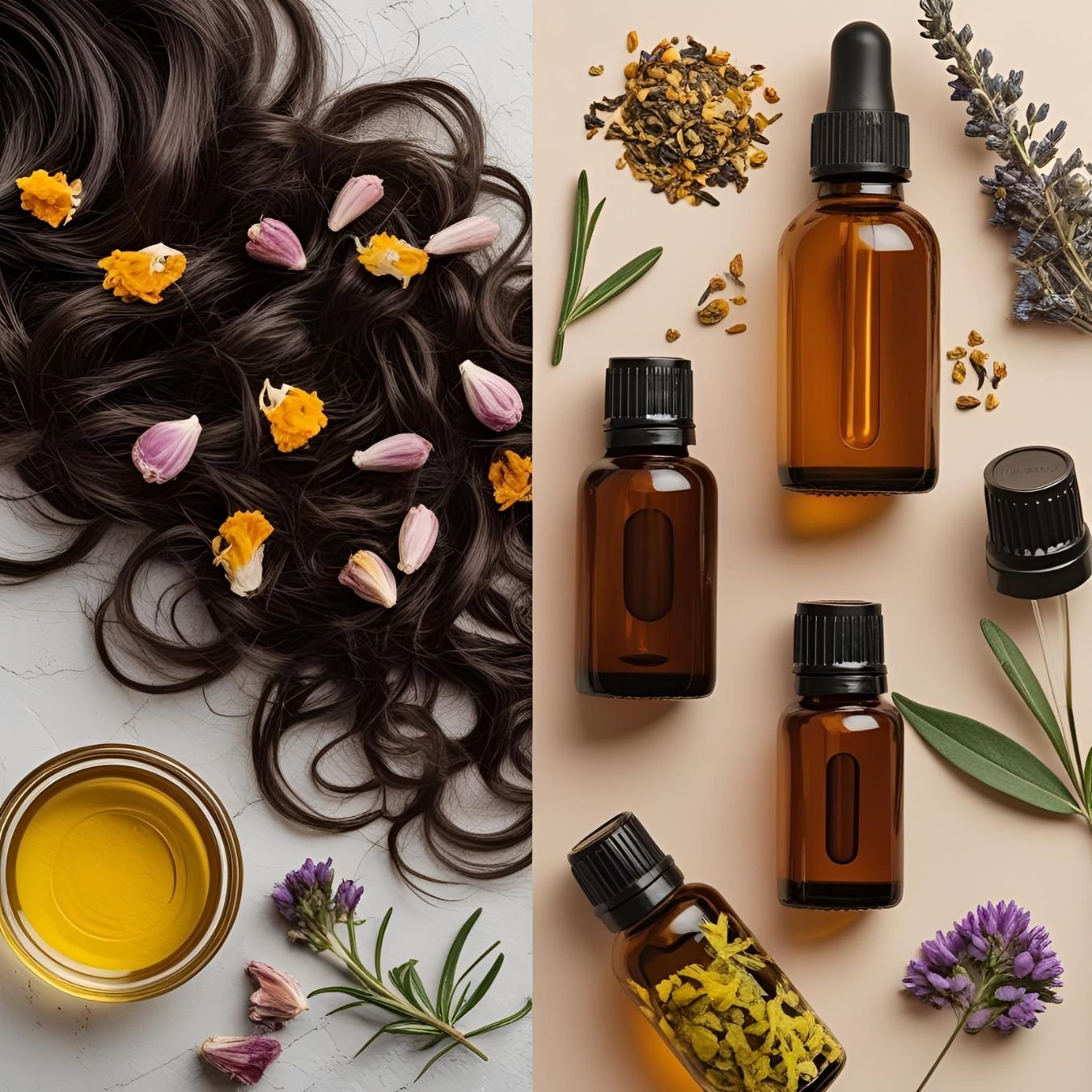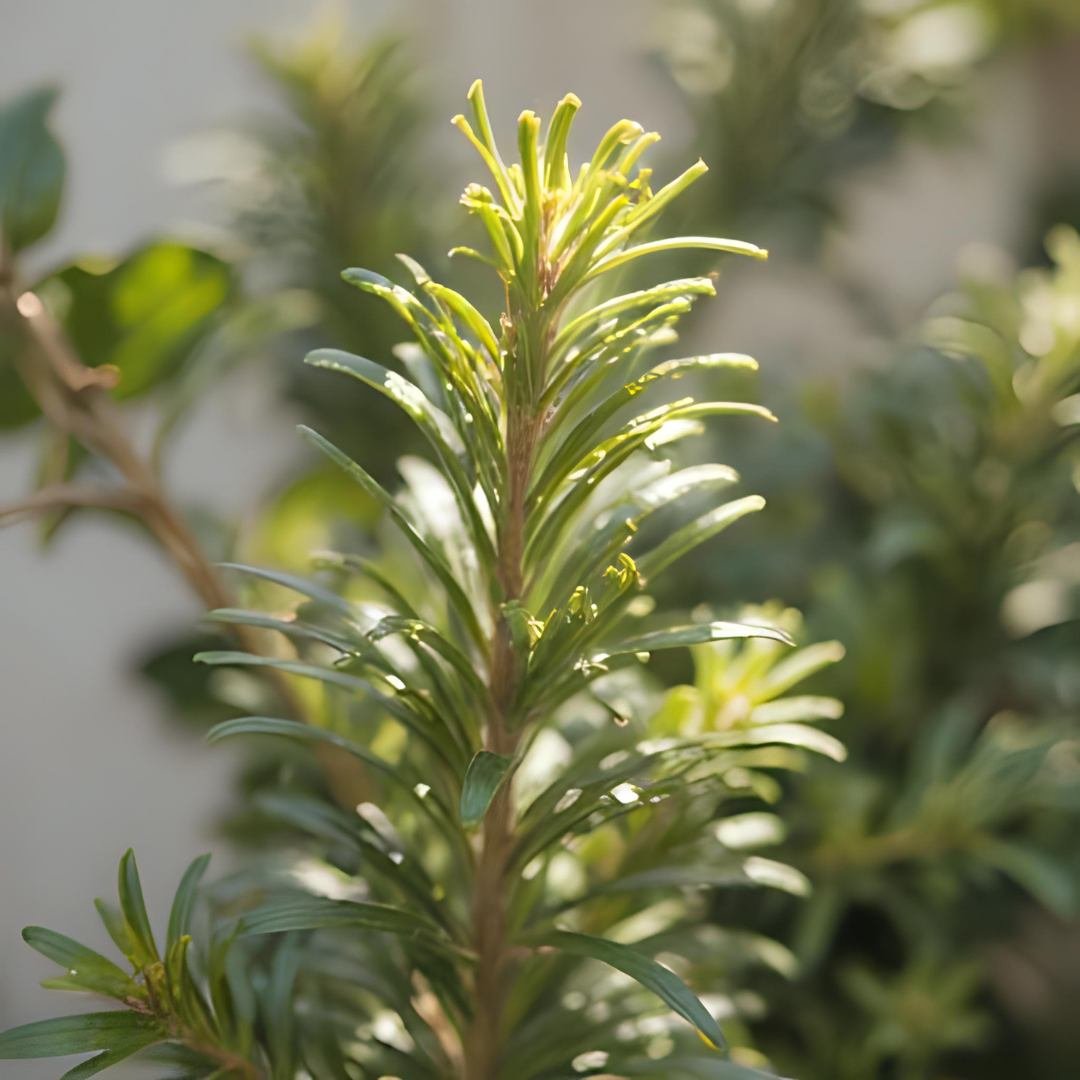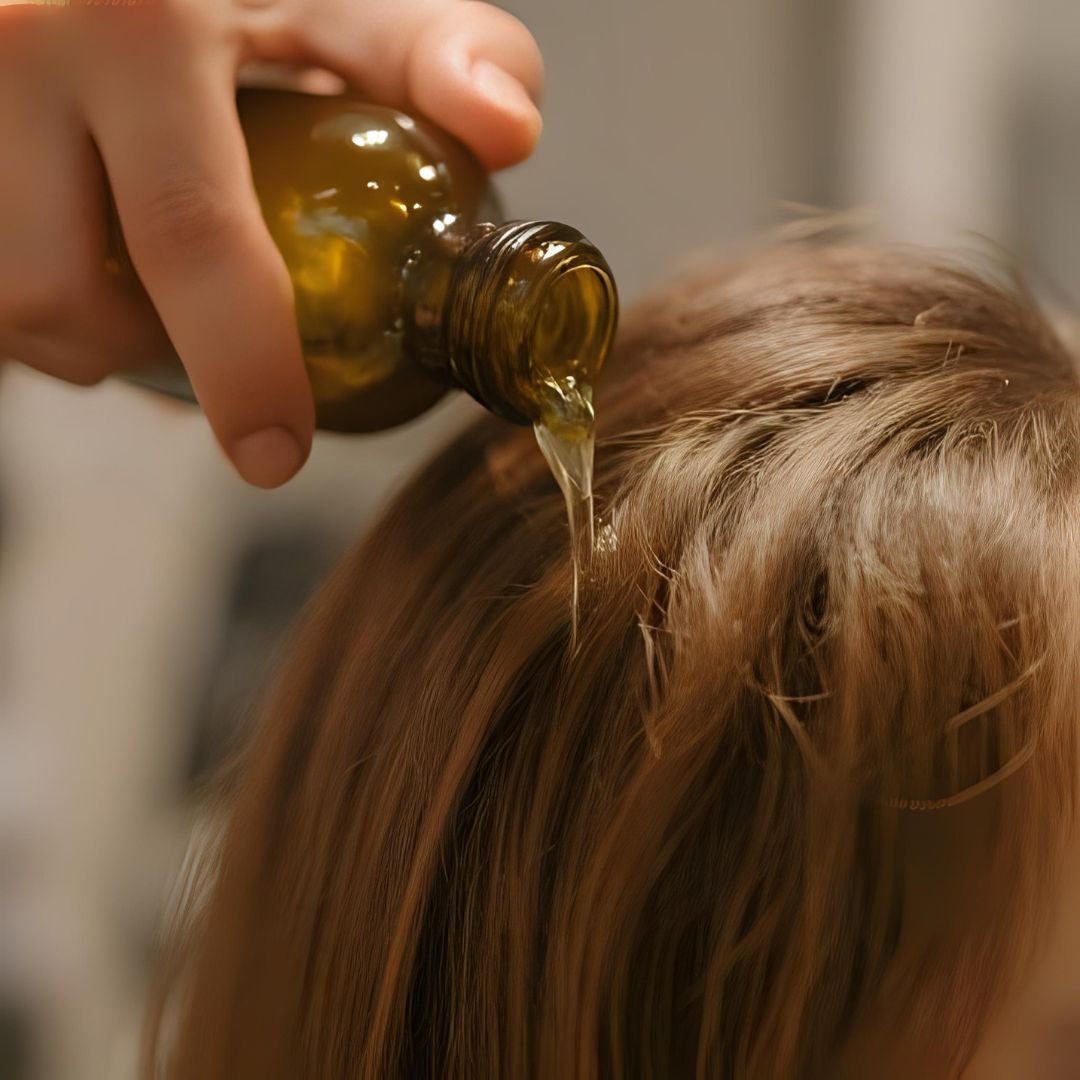In this guide
Essential oils can support a comfortable, balanced scalp when used thoughtfully. The key is proper dilution, smart carrier choices, and consistency—never undiluted application.
This expanded guide turns numbers into easy rules and gives you recipes, protocols, and FAQs so you can start confidently.
How Essential Oils Work (Plain English)
Essential oils are fragrant compounds distilled from plants. In hair and scalp care we don’t apply them neat; we dilute them into a “carrier” oil so they spread evenly and reduce the risk of irritation. Some oils—like tea tree—are favored when the scalp feels flaky or congested, while others—like lavender—are chosen for their soothing, comforting feel. Peppermint’s cooling sensation is a favorite in massage blends, and rosemary is often included in growth‑focused routines.
The goal is not to perfume your scalp. It’s to use a few drops as part of a calm, repeatable ritual that keeps the scalp comfortable. When in doubt, choose lower dilutions and shorter contact time.
Choosing Your Carrier (Half the Battle)
Carriers affect how the blend behaves. Jojoba is light and resembles skin’s natural sebum, making it a great starting point. Argan is slightly richer and adds slip to mid‑lengths. Fractionated coconut is very stable but can feel heavy on fine hair. Grapeseed absorbs quickly. You can even split the difference—half jojoba, half argan—to tune the feel.
Dilution Math You’ll Actually Use
Let’s make the safe ranges concrete. One fluid ounce is ~30 mL. A 1% dilution equals 6 drops essential oil per ounce of carrier. Here are practical targets:
- Daily leave‑in near the hairline: 0.5% (3 drops/oz)
- Pre‑wash scalp oil: 1–2% (6–12 drops/oz)
- Weekly mask blend: up to 3% (18 drops/oz)
Always patch test, keep blends away from eyes, and discontinue if irritation occurs.
Pick an Oil for a Goal
Tea Tree
Commonly used when the scalp feels flaky or oily. Pair with jojoba and keep contact times brief at first (10–15 minutes) before washing.
Peppermint
Refreshing and loved in massage blends. Start at 1% in a pre‑wash oil. Avoid eye contact—it’s potent.
Lavender
Gentle and soothing, especially if your scalp feels reactive after weather changes or new products.
Rosemary
Frequent addition to growth‑focused routines. Works well alongside peppermint or cedarwood in pre‑wash blends used two to three times weekly.
Starter Recipes (Small Batches)
- Clarifying Scalp Oil (1 oz): 6 drops tea tree + 4 drops lavender in jojoba. Massage 5 minutes; leave 15–20; shampoo.
- Cooling Massage (1 oz): 6 drops peppermint + 6 drops rosemary in argan. Use 2–3×/week pre‑wash.
- Soothing Blend (1 oz): 8 drops lavender + 2 drops tea tree in jojoba. Leave 20–30 minutes.
Protocols by Scenario
Oily or Flaky Days
Use the clarifying blend once weekly for a month, then reassess. Keep shampoos gentle; aggressive washing can rebound with more oil.
Dry, Tight Scalp
Swap to argan as the carrier and choose lavender‑forward blends. Extend contact time to 30 minutes and finish with a pea‑size serum on damp ends.
Workout Routines
Rinse with warm water after workouts and apply a few drops of leave‑in blend along the hairline. Full shampoo as needed to maintain comfort.
Who Should Skip or Modify
Young children, pregnancy/breastfeeding, and those with fragrance sensitivities should avoid or use very low dilutions only after professional guidance. Never ingest essential oils. Discontinue use if you notice redness, itching, or persistent dryness.
FAQ
- Can I apply essential oils directly?
- No—always dilute. Direct application increases the risk of irritation.
- How often should I use a pre‑wash blend?
- Two to three times weekly is plenty. More is not necessarily better.
- Do these replace medical treatment?
- No. They can support comfort, but persistent scalp conditions deserve medical evaluation.
Discover Balanced‑Scalp Formulas
Explore lightweight oils and serums designed to comfort the scalp while keeping hair soft and manageable.
Explore Products


